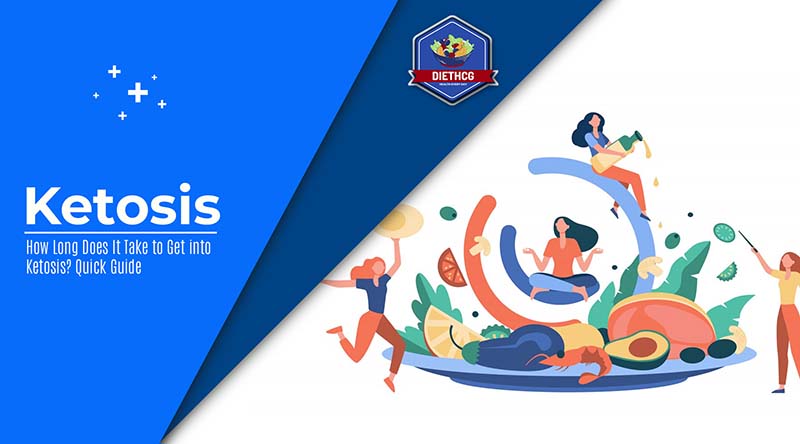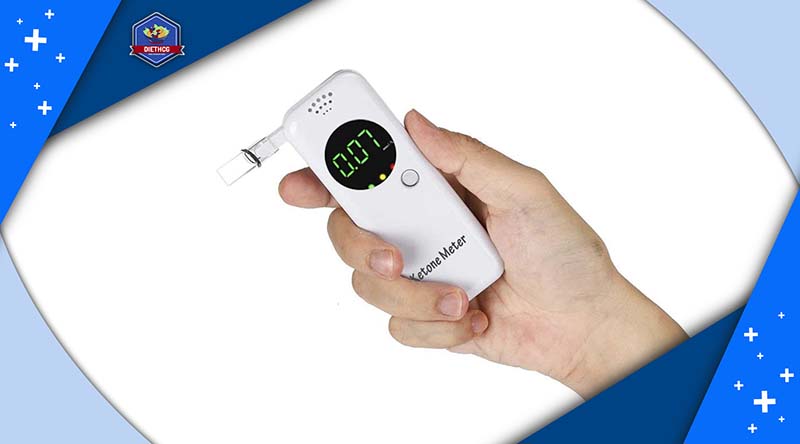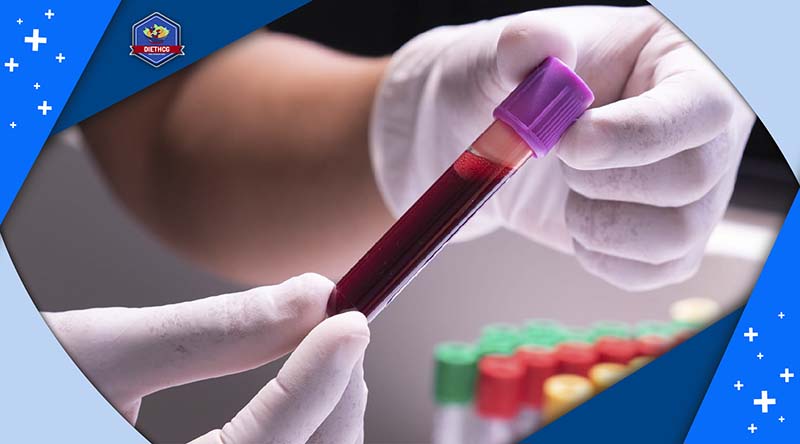Surprisingly, the body can shift from using carbs to fat for energy, entering a state known as ketosis, in just 2 to 4 days. This change, however, varies widely due to factors like diet, lifestyle, and carb consumption habits. Our guide on “How Long Does It Take to Get into Ketosis?” unveils the intricacies of achieving this metabolic state more efficiently. By understanding the science behind ketosis, you can enhance your diet to optimize health and accelerate weight loss.

1. Understanding the Timeline to Reach Ketosis
Ketosis is a metabolic state where your body shifts to burning fat for energy by producing molecules known as ketones, instead of relying on glucose from carbohydrates.
The most effective way to trigger ketosis is by significantly reducing your carb intake.
Carbs are broken down into sugar molecules like glucose during digestion, which your body uses for energy. Any excess glucose gets stored in your liver and muscles as glycogen.
When you cut your carb intake to around 50 grams per day or less, your body starts tapping into its glycogen reserves for energy. Once these stores are depleted, typically after 2–4 days on a carb-restricted diet, your body begins producing and using ketones for fuel, signaling the onset of ketosis.
However, the time it takes to enter ketosis can vary among individuals.
For some, it may take just a few days, while others might require a week or longer to reach this state. Factors like your usual carb consumption and dietary habits play a role. Individuals accustomed to high-carb diets may take longer to deplete their glycogen stores compared to those who already follow a lower-carb regimen.

2. How to Determine If You’re in Ketosis
During the transition into ketosis, you might notice some symptoms, often referred to as the “keto flu,” such as headaches, fatigue, nausea, bad breath, and increased thirst. While these signs may suggest that your body is adapting, the most reliable method to confirm whether you’ve entered ketosis is by testing your body’s ketone levels.
Here’s how you can measure your ketone levels:
- Urine Testing: You can use ketone urine strips to measure the levels of acetoacetate, one type of ketone, in your urine. These strips change color, typically ranging from pink to purple, based on the concentration of ketones present. Darker colors indicate higher ketone levels. While urine strips are inexpensive and easy to use, they may not be as accurate as other methods.
- Breath Testing: A ketone breath meter, such as Ketonix, measures the levels of acetone in your breath. This device displays a color to indicate whether you’re in ketosis and the level of ketones present. Research suggests that breath meters provide reasonably accurate results.

- Blood Testing: The most accurate way to measure ketone levels is through a blood ketone meter. Similar to a glucometer for measuring blood glucose levels, a blood ketone meter measures the concentration of beta-hydroxybutyrate, another type of ketone, in your blood. You simply prick your finger to draw a small amount of blood onto a test strip, which is then inserted into the meter. An ideal blood ketone range for maintaining ketosis is typically between 1.5–3.0 mmol per liter. While blood ketone meters offer precise measurements, the test strips can be costly compared to urine strips.

Using these tools to measure ketone levels provides an accurate assessment of your ketosis status, helping you determine whether adjustments are needed to achieve or sustain ketosis effectively.
3. Exploring Why Ketosis May Take Longer for Some
Age, metabolism, activity level, and current dietary composition all play roles in the timeline to achieve ketosis. Those inadvertently consuming more carbohydrates than recommended for a ketogenic diet may experience delays, as excessive carb intake can inhibit ketone production.
In a recent clinical study exploring the benefits of the keto diet, participants were advised to limit carb intake to under 20 grams per day. However, other research suggests that individuals can consume between 20 and 50 grams of carbohydrates daily while still entering ketosis. If experiencing difficulties reaching ketosis, it may be necessary to further reduce carb consumption.
Insufficient fat intake is another common pitfall. Generally, individuals should aim to derive approximately 55–60% of their daily calories from fat, 30–35% from protein, and 5–10% from carbs on a ketogenic diet. Inadequate fat intake can hinder ketone production.
Excessive protein consumption may also impede ketosis by promoting gluconeogenesis, a process that converts amino acids from protein into sugar. Elevated sugar levels can disrupt ketone production.
Beyond dietary considerations, lifestyle factors such as exercise, sleep quality, and stress levels can impact ketosis onset.
If facing challenges achieving ketosis, it’s advisable to assess dietary and lifestyle habits to identify potential barriers and make necessary adjustments.
4. What to Know Before Starting a Keto Journey
Before embarking on a keto journey, it’s crucial to understand that while it’s a popular method for weight loss, there are significant risks and drawbacks to consider.
Here’s what you should know:
- Initial Weight Loss: Rapid weight loss, often up to 10 pounds in 2 weeks or less, is common when starting a keto diet. However, much of this weight loss may be due to water loss rather than fat loss.
- Health Concerns: While low carb diets like keto can reduce sugar intake and lower the risk of conditions like obesity and diabetes, there are long-term health implications that are not fully understood yet.
- Potential Side Effects: Long-term adherence to the keto diet may lead to issues such as fat buildup in the liver, kidney stones, inadequate protein intake, and vitamin deficiencies. More research is needed to understand these consequences fully.
- Nutritional Imbalance: The keto diet restricts the consumption of fruits and vegetables while promoting higher fat intake. This imbalance can lead to inflammation, oxidative stress, and potentially accelerate aging.
- Challenges with Sustainability: Due to its strict limitations, many individuals find it challenging to maintain the keto diet over the long term. Sustainability can be a significant hurdle for some people.
- Health Conditions: People with diabetes who take insulin or oral hypoglycemic agents need to adjust their medications before starting the keto diet to avoid severe hypoglycemia. Individuals with pancreas or liver conditions, as well as metabolism disorders, should consult their doctor before attempting the diet.
Given these considerations, it’s essential to consult with a healthcare professional, especially if you’re interested in trying the keto diet. Your doctor can provide personalized advice and guidance to determine if the keto diet is suitable for you and ensure your safety throughout the journey.
5. 7 Tips for Reaching Ketosis More Quickly
If you’re finding it challenging to enter ketosis, these 7 tips can help expedite the process:
- Monitor Carb Intake: Aim to consume between 20–50 grams of carbs per day to stimulate ketone production. Individuals struggling to enter ketosis may benefit from staying closer to the lower end of this range.
- Track Carbs: Keep a close eye on your carb intake by tracking it diligently. This ensures you stay within the recommended 20–50 grams per day and prevents underestimation of carb consumption.

- Limit Restaurant Dining: While there are keto-friendly options available at restaurants, dining out can make it harder to control your carb intake. Limiting restaurant meals can aid in better carb management.
- Watch for Hidden Carbs: Be mindful of hidden sources of carbs, particularly in condiments and sauces. Many of these products contain high carb content, which can hinder ketosis if overlooked.
- Prioritize Healthy Fats: Increase your consumption of high-quality fats, aiming for around 55–60% of your daily calorie intake. Incorporate foods rich in healthy fats such as nuts, nut butter, olive oil, avocados, eggs, and fatty fish to support ketone production.

- Experiment with Intermittent Fasting: Explore intermittent fasting, which can assist your body in transitioning from carb to fat metabolism while maintaining energy levels. Fasting periods may help enhance ketone production and promote metabolic flexibility.
- Stay Active: Engage in regular physical activity to deplete glycogen stores in your body, encouraging the liver to ramp up ketone production. Studies suggest that exercising in a fasted state can be particularly effective in boosting ketone levels.
By implementing these strategies, you can optimize your chances of reaching ketosis more efficiently and effectively. Remember to listen to your body and make adjustments as needed to find what works best for you.
6. Conclusion
Exploring “How Long Does It Take to Get into Ketosis?” reveals a path to significant health improvements, from rapid weight loss to enhanced energy and mental clarity. Our guide details the essentials for achieving ketosis through dietary and lifestyle adjustments, tailored to your unique journey. While experiences vary, the potential benefits of adopting a keto lifestyle are compelling. And don’t forget to follow DietHCG for more interesting and useful information for your weight loss regimen!


